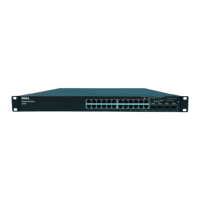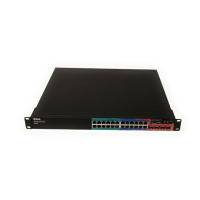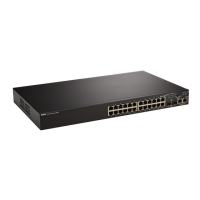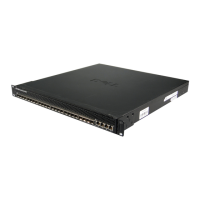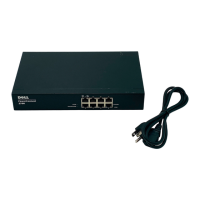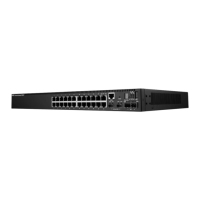Do you have a question about the Dell POWERCONNECT 6200 SERIES and is the answer not in the manual?
Details document structure, covering system config, switching, routing, security, IPv6, QoS, multicast, utility.
Lists other Dell PowerConnect 6200 Series documentation like CLI Command Reference and User's Guide.
Discovers routes packets take, maps routes, detects network issues, and tracks hops.
Generates, uploads, and applies text-formatted script files for system configuration.
Establishes an outbound telnet connection between a device and a remote host.
Synchronizes network resources by providing synchronized network timestamps.
Allows storing system messages and/or errors locally or on a remote syslog server.
Specifies an alphanumeric interface identifier for SNMP network management.
Protects against traffic storms by dropping broadcast, multicast, or unicast traffic.
Determines cable connection status on selected ports using Time Domain Reflectometry (TDR).
Partitions the network into logical segments, improving administration, security, and management.
Carries voice traffic with defined priority to ensure sound quality for IP phones.
Monitors IGMP transactions to conserve bandwidth by forwarding multicast traffic efficiently.
Performs IGMP snooping functions on a VLAN when an IP-multicast router is not present.
Treats multiple physical links as a single logical link for increased bandwidth and reliability.
Selects network traffic from specific ports for analysis by a network analyzer.
Limits the number of MAC addresses on a port to prevent unauthorized access.
Allows interfaces to advertise capabilities and physical descriptions for topology identification.
Protects the network and switch against various types of denial of service attacks.
Monitors DHCP messages to filter harmful messages and build a bindings database.
Industry standard for monitoring high-speed switched and routed networks using sampling.
Configures the switch to support routing between different VLANs.
Provides a backup mechanism to eliminate single points of failure in network routing.
Allows a router to answer ARP requests for destinations not directly connected to it.
Open Shortest Path First, an interior gateway protocol for large or complex networks.
An interior gateway protocol used for exchanging network topology information.
Controls how the router chooses routes by assigning administrative preference values.
Software-only interfaces used for device management and stable IP addressing.
Forwards configured UDP broadcast packets to a specific IP address for applications.
Controls port access by enforcing authentication of supplicants attached to the switch.
Places ports into specific VLANs based on 802.1X authentication results.
Allows the authentication server to assign DiffServ policies to users based on authentication.
Defines rules to permit or deny traffic, providing security and traffic flow control.
Remote Authentication Dial In User Service protocol for centralized authentication.
Terminal Access Controller Access Control System for centralized access control.
Supplemental authentication for 802.1x unaware clients using MAC address.
Allows client access only upon user verification, for guest and authenticated users.
Introduces IPv6 network operation and address structure, comparing it to IPv4.
Enables IPv6 routing on physical and VLAN interfaces, supporting auto-configuration.
Provides preferential treatment to traffic types by configuring ingress/egress ports and queues.
Implements QoS policies by classifying traffic and handling it based on defined rules.
Explains IP multicasting for efficient network bandwidth usage and group communication.
Configures IGMP for IPv4 hosts to join/leave multicast groups for packet reception.
Enables multicast routers to learn group membership and forward packets based on it.
Distance Vector Multicast Routing Protocol for building multicast distribution trees.
Protocol Independent Multicast for scalable inter-domain multicast routing.
Combines multicast routing protocols with IGMP snooping for efficient traffic management.
Automatically configures a switch upon initialization when no configuration file is found.
Allows forwarding plane to continue operations during control plane restarts in a stack.
| Ports | 24 or 48 10/100/1000BASE-T ports |
|---|---|
| Layer | Layer 3 |
| Management | Web-based, CLI, SNMP |
| Rack Mountable | Yes |
| Jumbo Frame Support | Up to 9, 216 bytes |
| Dimensions (H x W x D) | 1.73 x 17.4 x 16.5 in (4.4 x 44.2 x 41.9 cm) |
| Storage Temperature | -40°F to 158°F (-40°C to 70°C) |
